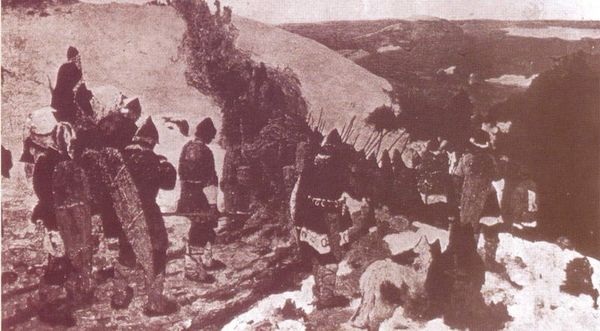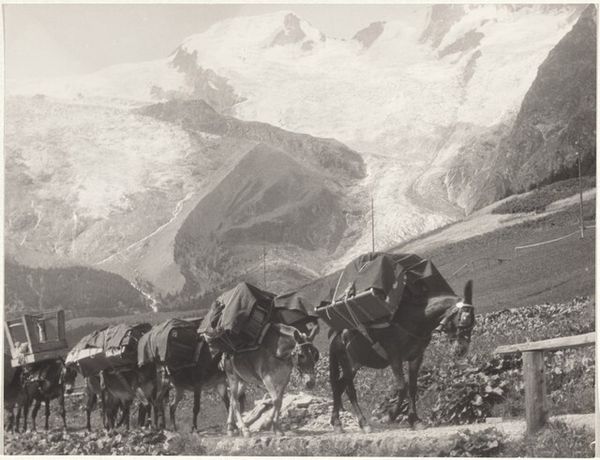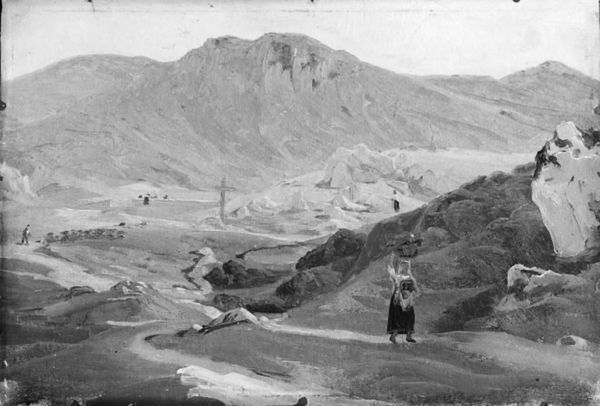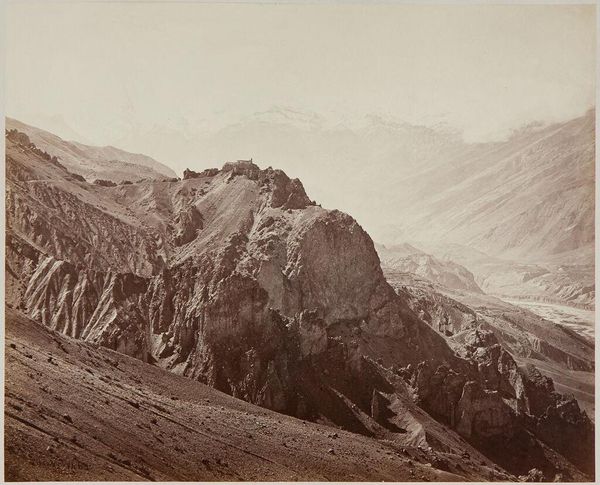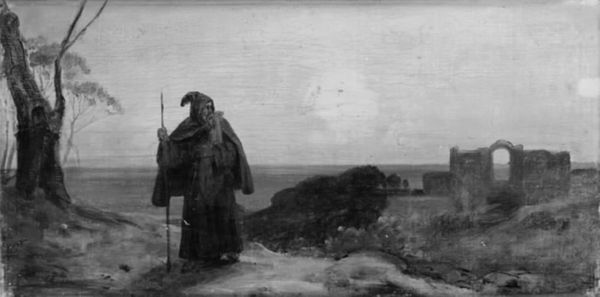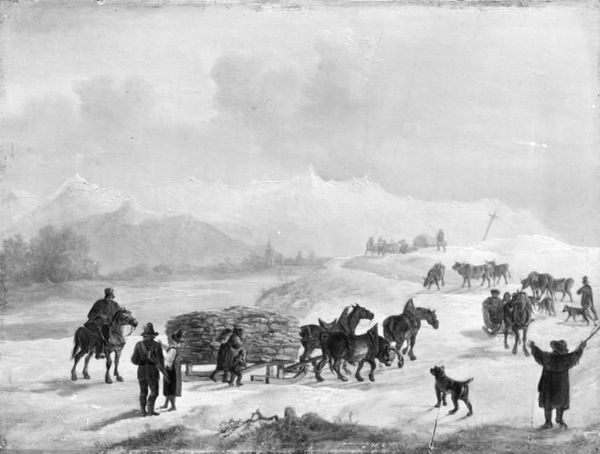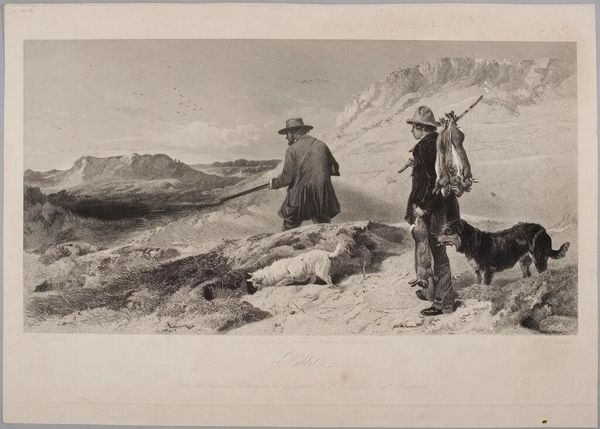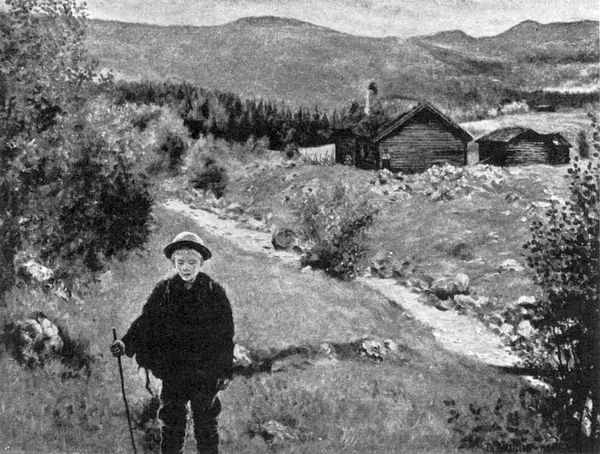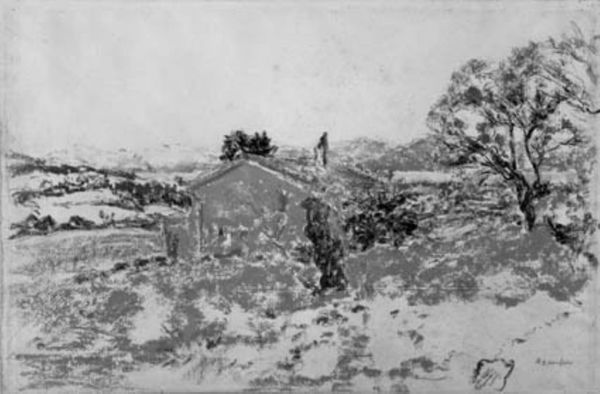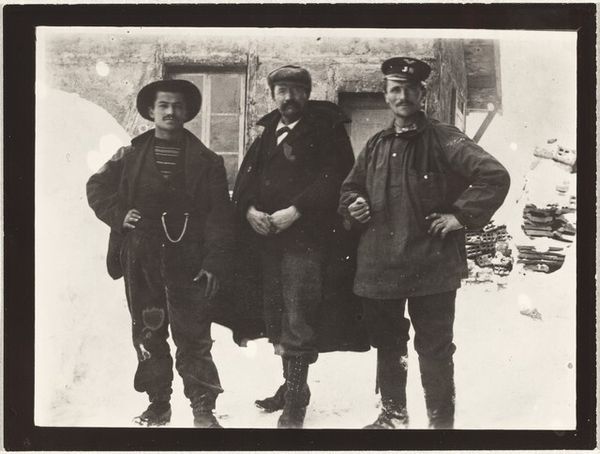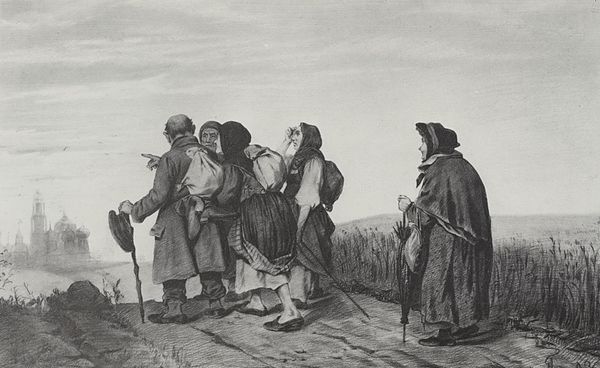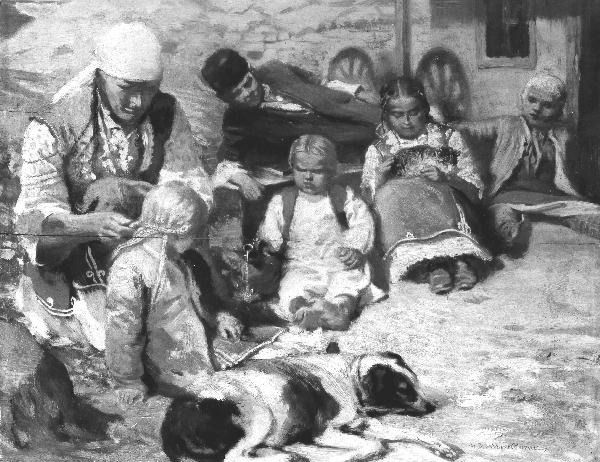
Copyright: Public domain
Curator: The overwhelming impression here is one of hardship; the composition alone emphasizes weight and weariness. Editor: I agree. Gerolamo Induno painted "Wayfarers Parked on the Path" in 1885, employing oil on canvas to capture this stark, monochromatic scene. What do you make of the limited palette? Curator: It evokes a powerful emotional response; the near-absence of color suggests a sense of timelessness and universal suffering. The figures blend into the landscape. Notice the mountain in the background and how the artist almost flattens it into the snowstorm? It’s reminiscent of pilgrimage art, a visual language that repeats the motif of burdened bodies as signifiers of survival. Editor: Right. Induno situates his figures – what appears to be a mother, grandmother, and two children – in what could be understood as a politically-charged context. It’s northern Italy in the late 19th century; rapid industrialization created an uneven distribution of wealth, which left many families in poverty. It's essential to acknowledge that their journey is representative of the working class's struggle during this era. Curator: The staff that the elder woman carries takes on symbolic meaning, suggesting their dependence on it not only for mobility, but possibly as a symbol of spiritual succor and physical self-reliance. In art, the motif of the walking stick or staff indicates hope, guidance, and trust. Editor: Yet, even those symbols of hope are overshadowed by the lack of a clear path forward. They’re on a path, but to where? The oppressive conditions, and Induno’s painting, serve as a commentary on Italy’s unification, revealing its inherent contradictions and exclusions. We can view the artwork through the lens of labor movements from that era, like early socialist thinkers whose ideas offered counter narratives of agency in an otherwise dismal landscape. Curator: These symbols are intentionally ambiguous. The absence of vibrant color adds to this complexity, suggesting multiple layers of interpretation rather than any singular historical reading. Editor: The layers allow the scene to function both as a document of a specific moment and as a more universal statement about migration, poverty, and the search for something better. The lack of individuality—their faces obscured, their clothing nondescript—pushes them into the space of archetype. Curator: Absolutely, and that invites us to consider not only the symbols, but how we project ourselves onto the canvas. Editor: A powerful point—thanks for offering that nuanced perspective!
Comments
No comments
Be the first to comment and join the conversation on the ultimate creative platform.
